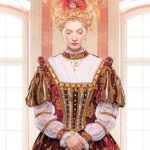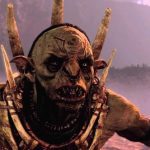 Weird Stuff
Weird Stuff  Weird Stuff
Weird Stuff  Our World
Our World 10 Ways Your Christmas Tree Is More Lit Than You Think
 Movies and TV
Movies and TV The 10 Coolest Stars to Set Sail on The Love Boat
 History
History 10 Things You Didn’t Know About the American National Anthem
 Technology
Technology Top 10 Everyday Tech Buzzwords That Hide a Darker Past
 Humans
Humans 10 Everyday Human Behaviors That Are Actually Survival Instincts
 Animals
Animals 10 Animals That Humiliated and Harmed Historical Leaders
 History
History 10 Most Influential Protests in Modern History
 Creepy
Creepy 10 More Representations of Death from Myth, Legend, and Folktale
 Technology
Technology 10 Scientific Breakthroughs of 2025 That’ll Change Everything
 Weird Stuff
Weird Stuff Ten Bizarre Facts About The Doge Meme
 Our World
Our World 10 Ways Your Christmas Tree Is More Lit Than You Think
 Movies and TV
Movies and TV The 10 Coolest Stars to Set Sail on The Love Boat
Who's Behind Listverse?

Jamie Frater
Head Editor
Jamie founded Listverse due to an insatiable desire to share fascinating, obscure, and bizarre facts. He has been a guest speaker on numerous national radio and television stations and is a five time published author.
More About Us History
History 10 Things You Didn’t Know About the American National Anthem
 Technology
Technology Top 10 Everyday Tech Buzzwords That Hide a Darker Past
 Humans
Humans 10 Everyday Human Behaviors That Are Actually Survival Instincts
 Animals
Animals 10 Animals That Humiliated and Harmed Historical Leaders
 History
History 10 Most Influential Protests in Modern History
 Creepy
Creepy 10 More Representations of Death from Myth, Legend, and Folktale
 Technology
Technology 10 Scientific Breakthroughs of 2025 That’ll Change Everything
10 Game of Thrones Characters Who Differed Greatly in the Books
When adapting a sprawling, intricate book series like A Song of Ice and Fire into a TV show, it’s no surprise that some characters had to undergo significant changes. In Game of Thrones, many fan-favorite characters were reimagined, simplified, or had their storylines altered to fit the show’s demands.
These changes have sparked plenty of discussion among fans, especially when the show’s version of a character sharply diverged from George R.R. Martin’s original creation. Whether it’s the loss of certain character traits or entire plot arcs being cut, these differences reflect the creative challenges and decisions involved in bringing such a complex world to life on screen.
Related: 10 Real Historical Events That Inspired ‘Game of Thrones’
10 Sansa Stark
Sansa Stark’s journey in Game of Thrones is one of the most compelling, yet her character arc in the show significantly diverges from her portrayal in George R.R. Martin’s A Song of Ice and Fire series. In the books, Sansa remains in the Vale under the tutelage of Petyr Baelish, learning the intricacies of court politics and manipulation. Her evolution is subtle and gradual, reflecting her growing understanding of the dangerous world she inhabits.
Sansa, operating under the alias Alayne Stone, becomes more adept at playing the game of thrones, carefully observing and learning from Littlefinger while still struggling with her identity and her past. This slower, more complex transformation allows readers to see Sansa as a multifaceted character, developing her strength and cunning over time.
In the TV adaptation, however, Sansa’s development is more accelerated and sometimes feels less nuanced. The showrunners condensed several of her storylines, notably merging her character with Jeyne Poole’s traumatic experiences with Ramsay Bolton—a plotline that does not occur in the books.
This change, while highlighting Sansa’s resilience and ultimate rise to power, also drew criticism for its handling of her agency and internal struggles. Despite these alterations, Sansa’s arc in the show still resonates with many fans, particularly in how she emerges as the Lady of Winterfell. This role showcases her growth into a strong, independent leader.[1]
9 Tyrion Lannister
In the books, Tyrion Lannister is one of the most complex and multifaceted characters. He is a deeply intelligent, often cynical, and occasionally ruthless individual who, despite his sharp wit, struggles with self-loathing and a sense of being unloved by his family. In print, his physical appearance is much more striking and severe than what is depicted in the TV series.
In the novels, Tyrion is described as having mismatched eyes—one green and one black—and much more grotesque. He is a dwarf with a disproportionately large head, a prominent brow, and a mouth full of crooked teeth. After the Battle of the Blackwater, Tyrion suffers a serious injury that leaves him even more disfigured; his nose is almost entirely cut off, leaving him with a hideously scarred face.
In the HBO adaptation, however, Tyrion’s appearance is significantly toned down. Portrayed by Peter Dinklage, Tyrion is a handsome man with only minor facial scars after the battle, and his injury is reduced to a single visible scar across his cheek. Furthermore, after killing his father, Tywin Lannister, in the books, Tyrion’s character takes a darker turn. His journey across Essos is marked by bitterness, self-destruction, and a thirst for vengeance against those who wronged him.
This darker portrayal gives Tyrion more depth, showing a man grappling with the consequences of his actions and the bleakness of his reality. In contrast, the television show softened many of these darker aspects, focusing more on Tyrion’s cleverness and humor. While the show did capture Tyrion’s sharp tongue and strategic mind, it often reduced his character to comic relief, especially in the later seasons. His political blunders and questionable decisions in the final season also disappointed many fans who felt the show had strayed too far from the nuanced, morally ambiguous character in the books.[2]
8 Euron Greyjoy
Euron Greyjoy on the screen is a far cry from the menacing, enigmatic figure depicted in Martin’s novels. In the books, Euron is a much more complex and terrifying character. Known as “Crow’s Eye” because of the eyepatch he wears in the books, he is a ruthless pirate and sorcerer who dabbles in dark magic, uses a variety of mystical artifacts, and exudes a mysterious, almost otherworldly aura.
His presence in the Iron Islands is marked by fear and awe as he returns from exile with a fleet of ships, a crew of fanatical followers, and a mysterious horn called Dragonbinder, which he claims can control dragons. Euron’s ambitions are grand, aiming not just for the Iron Throne but also to wield unimaginable power through arcane means. In print, he has a more elaborate backstory, including his travels to the ruins of Valyria and his claim of having a dragon egg.
In contrast, the show’s portrayal of Euron is much less nuanced and significantly less menacing. Rather than the dark, calculating sorcerer of the books, show-Euron comes across as a brash, over-the-top pirate with a penchant for violence and shock value. His character is reduced to being a swaggering, almost comical villain, more focused on personal gratification than on the grand, ominous schemes that define him in the novels.
Key elements of his character, such as his use of dark magic and the Dragonbinder horn, are entirely absent from the show. This simplified portrayal left many fans disappointed, as Euron in the TV series lacks the intricate, chilling presence that made him so compelling in the books.[3]
7 Brienne of Tarth
Brienne of Tarth, one of the most beloved characters in Game of Thrones, is portrayed as a noble and skilled warrior who defies gender norms with her strength and honor. However, her storyline in the TV show significantly differs from her journey in the novels. In the books, Brienne’s character has a much more extensive and complex narrative.
After Jaime Lannister gives her his sword, Oathkeeper, she embarks on a lengthy and dangerous quest to find Sansa Stark. This journey leads her through various trials that test her loyalty, resolve, and sense of identity. It is filled with deep introspection and moral dilemmas, showcasing her internal struggle as well as her external battles.
In contrast, the show condenses much of Brienne’s storyline, focusing primarily on her relationship with Jaime, which the show depicts as more overtly romantic. Their relationship is complex and filled with mutual respect and unspoken feelings, but in the books, they part ways with unresolved tension.
While her knighting by Jaime in the final season of the show is a powerful moment, this knighting doesn’t occur in the books. Furthermore, the TV adaptation omits significant interactions she has with other characters, like her complex encounter with Lady Stoneheart, the resurrected Catelyn Stark, who commands her to kill Jaime.[4]
6 Stannis Baratheon
Stannis Baratheon, a pivotal character in Martin’s A Song of Ice and Fire series, is portrayed quite differently in the books compared to the show. In the books, Stannis is a rigid, duty-bound leader often perceived as cold and unyielding. However, his actions are driven by a strong sense of justice and responsibility, even when they conflict with his personal desires.
His unwavering commitment to what he sees as the rightful claim to the Iron Throne makes him a more complex and sympathetic character in the books. His use of Melisandre and her dark magic is also shown with more internal conflict, as he often questions the morality of his decisions and the true nature of her powers. The relationship between them is shown as deeply influential in the show, sometimes implying he is more swayed by her than in the books.
In contrast, the television series simplifies Stannis’s character, often reducing him to a stern, unlikable figure whose moral dilemmas are less explored. One of the most significant and controversial differences is his decision to sacrifice his daughter Shireen to the flames, a plot point that is hinted at but not executed in the books. This act, portrayed as a desperate measure to win the war, was seen by many viewers as a betrayal of his character’s complexity and the nuanced internal conflicts that define him in the novels.[5]
5 Jeyne Westerling/Talisa Maegyr
In Martin’s books, Jeyne Westerling is the woman Robb Stark marries after a moment of vulnerability following the death of his brothers. Jeyne hails from a noble but minor Westerlands house that secretly serves the Lannisters, adding layers of political intrigue to her character and marriage to Robb.
Her relationship with Robb is largely driven by honor, as he marries her after sleeping with her, and she remains loyal to him despite the political complications. In the books, Jeyne’s story is tragic but understated—she does not attend the Red Wedding, and her fate remains uncertain as she is left behind at Riverrun under the watchful eye of the Lannisters.
In the HBO series, Jeyne Westerling’s character is replaced by Talisa Maegyr, a healer from Volantis who meets Robb on the battlefield. Talisa is a completely original creation for the show, embodying a more romantic and idealistic love story than the politically driven marriage in the books. The change from Jeyne to Talisa significantly alters the tone and depth of Robb’s storyline. Talisa is portrayed as more independent and strong-willed, contrasting with the more traditional and dutiful Jeyne.
This shift also simplifies the complex political machinations of the Westerling family and reduces the tension between Robb’s sense of duty and his personal desires. Talisa’s presence at the Red Wedding and her subsequent brutal death—along with her unborn child—intensifies the emotional impact of the scene, but it also diverges significantly from Martin’s narrative, leaving book fans with a very different interpretation of Robb’s downfall.[6]
4 Doran Martell
Doran Martell is a master strategist in the novels, playing the long game with incredible patience and foresight. As the Prince of Dorne, he carefully plots to avenge his sister Elia’s brutal murder during Robert’s Rebellion. His character is deeply introspective, burdened by his responsibilities and the need to protect his people while seeking justice for his family. Doran’s plans are intricate, involving secret alliances and long-term schemes that gradually unfold throughout the books, showcasing his political acumen and deep sense of duty.
In contrast, the show reduces Doran Martell’s complexity, transforming him into a more passive and less influential figure. His screen time is limited, and his schemes are either glossed over or omitted entirely. He also has a complex political relationship with his daughter Arianne, a prominent character in the books but completely omitted from the show. In the show, Doran’s sudden death, orchestrated by Ellaria Sand and the Sand Snakes, deviates from the book’s narrative, where he is part of a larger political plot, and his death has significant consequences for the Martell family.[7]
3 Asha Greyjoy/Yara Greyjoy
Asha Greyjoy, known as Yara in the television series, is a character who underwent notable changes in her transition from the books to the screen. In the novels, Asha is portrayed as a fierce and cunning leader who is deeply committed to her family and people. She commands respect among the Ironborn not just because of her lineage but also due to her proven abilities as a warrior and strategist.
Asha is also a key player in the Greyjoy succession struggle, using her intelligence and charisma to rally support for her claim to the Seastone Chair. Her character is rich with depth, balancing loyalty to her family with her desire for independence and power. In the show, while Yara retains much of Asha’s strength and leadership qualities, her character is somewhat simplified.
The television adaptation omits some of her more complex relationships and political maneuverings. For instance, in the books, Asha has a significant role in the Kingsmoot, where the Ironborn choose their new leader, and she presents a strong case for her rule, challenging traditional gender norms. In contrast, the show focuses more on her relationship with her brother Theon and her involvement in Daenerys Targaryen’s campaign. The show also depicts her as bisexual, with scenes showing her with both men and women. In the book, Asha is depicted as heterosexual with several male lovers.[8]
2 Ser Barristan Selmy
Ser Barristan Selmy is a highly respected and legendary knight in the books, known for his unwavering honor and loyalty. After being dismissed from the Kingsguard by Joffrey Baratheon, Barristan seeks out Daenerys Targaryen in Essos and becomes one of her most trusted advisors.
In the novels, Barristan guides Daenerys through Meereen’s political landscape, offering wisdom in leadership and battle. He’s a formidable warrior and principled man, grappling with the moral complexities of serving a queen aiming to reclaim her throne. Barristan’s journey is rich and multifaceted, influencing key events in Daenerys’s court.
In contrast, the television adaptation cuts Barristan Selmy’s story short, killing him off unexpectedly in the fifth season. His death during a battle with the Sons of the Harpy shocked many fans, as it diverged significantly from his ongoing and important role in the books. This early demise deprived the show of a character who, in the source material, provides a crucial connection to the history and lore of Westeros.
Barristan’s impact on Daenerys’s decisions in Meereen is significant in the books, making his sudden exit in the show seem like a missed chance to explore his character’s depth. Killing him off early drew criticism from book readers who valued Martin’s careful crafting of Barristan’s narrative.[9]
1 Lady Stoneheart
Lady Stoneheart, the resurrected and vengeful version of Catelyn Stark, is one of the most significant characters from the book and was completely omitted from the Game of Thrones TV adaptation. In the books, after Catelyn’s brutal murder at the Red Wedding, she is brought back to life by Beric Dondarrion, who sacrifices his own life to restore hers. However, she returns as a dark and twisted version of herself, consumed by a desire for revenge against those who betrayed her family.
Her appearance is described as ghastly, with her wounds from the Red Wedding still visible. Leading the Brotherhood Without Banners, Lady Stoneheart embarks on a ruthless campaign, hanging Freys, Lannisters, and anyone she believes had a hand in the massacre of her family. Her presence adds a layer of relentless vengeance and the supernatural to the story, making her one of the most feared and tragic figures in the books.
In contrast, the showrunners chose to exclude Lady Stoneheart entirely from the TV series, a decision that disappointed many fans of the books. This omission meant that viewers never saw the darker turn Catelyn’s character takes, nor the impact her vengeful actions have on the wider narrative.
The absence of Lady Stoneheart also significantly altered the arcs of several other characters, including Brienne of Tarth and Jaime Lannister, who have key interactions with her in the books. Without Lady Stoneheart, the show’s exploration of themes like resurrection, justice, and the haunting consequences of betrayal felt less complex and less tied to the Stark family’s sense of enduring tragedy.[10]








